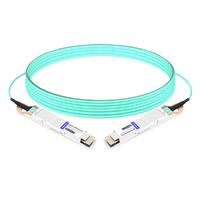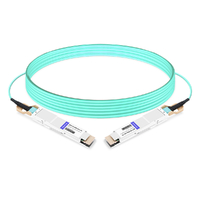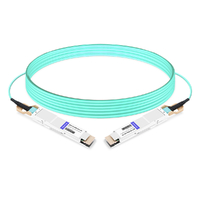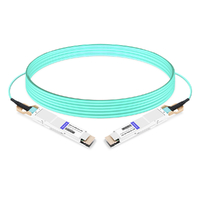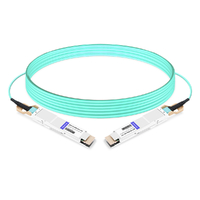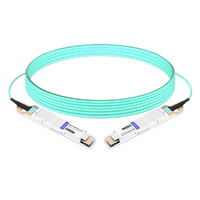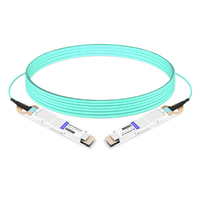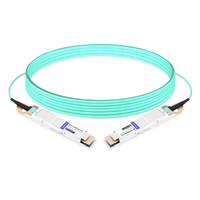In light of the rapid changes in data communication and networking, there is a great need for higher bandwidth, lower latency, and better connectivity. This has led to the development of new optical interconnect technologies such as 800G Active Optical Cable (AOC) and Quad Small Form-factor Pluggable Double Density (QSFP-DD) interface, among others. The aim of this article is to provide an elaborate understanding of these technologies, including their operating principles, as well as why they are essential in meeting modern data centers’ increasing demand for bandwidth and incredibly high-performance computing environments. By looking at the technical specifications of 800G AOC and QSFP-DD applications, readers will learn how these innovations enable efficient data transmission, which contributes to the networking infrastructure’s future.
Table of Contents
ToggleWhat is 800g Technology?
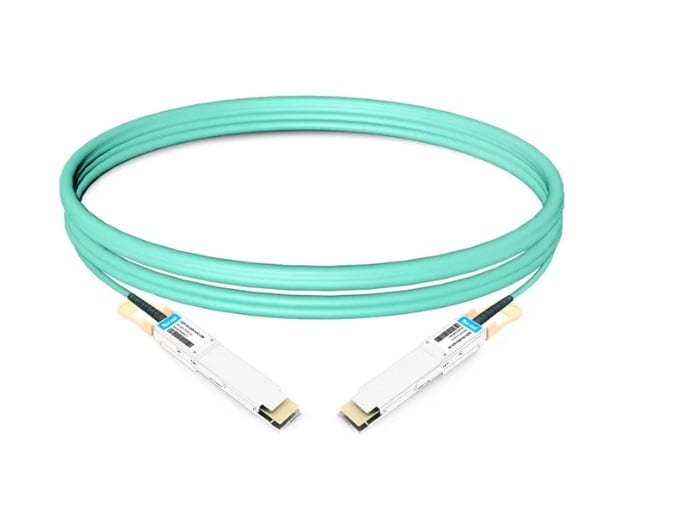
Key features of 800g solutions
- High Bandwidth: With a data centre and networking application needing more data traffic, these solutions come with 800G that support up to eight times the bandwidth of 100G technologies.
- Low Latency: These solutions have been designed to minimize latency, which in turn speeds up information transmission and improves network performance overall.
- Enhanced Density: The QSFP-DD form factor permits greater connectivity within limited rack spaces by achieving higher port densities.
- Power Efficiency: Advanced power management techniques result in better energy efficiency for 800G solutions compared to earlier generations.
- Versatile Applications: Data center interconnects, high-performance computing, and AI/ML workloads are some of the applications supported by 800G AOCs and QSFP-DD interfaces.
- Backward Compatibility: They ensure simpler integration into existing infrastructures since they can work well with previous versions of Ethernet standards.
Applications of 800g in modern networks
The ever-increasing demand for high-speed data transfer is one of the reasons why 800G technology is used in many modern networking scenarios. In data centers, 800G solutions help create ultra-fast interconnects that can handle a lot of storage and processing power. The same applies to high-performance computing environments where rapid data transfer is needed for complex calculations and simulations using 800G AOCs. And with artificial intelligence and machine learning workloads on the rise, they will greatly benefit from the bandwidth capabilities provided by this tech since these applications usually involve large amounts of transferred information. Plus, telecom providers are empowered by 800g solutions to offer better services with more scalable bandwidths which leads to strong performance and future-proofing their networks.
Benefits of adopting 800g systems
There are many advantages to adopting 800G systems that fit the needs of modern networking. The first advantage is higher bandwidth, which allows large amounts of data to be sent at once thus greatly improving network efficiency and reducing latency. This feature is important for applications such as cloud computing and real-time analytics where huge amounts of data need to be transferred.
The second advantage is cost savings because 800G solutions can combine several slower connections into one fast interface hence cutting down on both capital and operational costs. In addition, by using sophisticated optical technologies in their designs, these systems improve signal quality over greater distances making networks simpler while boosting reliability.
Finally, another reason why businesses should invest in this technology now rather than later when they might have no choice but to do so due to growing user demand is that it provides scalability. As a result, firms will always stay ahead of competitors who may not be able or willing enough to adapt quickly enough before becoming obsolete themselves within an increasingly interconnected global marketplace.
How Does QSFP-DD Transceiver Work?
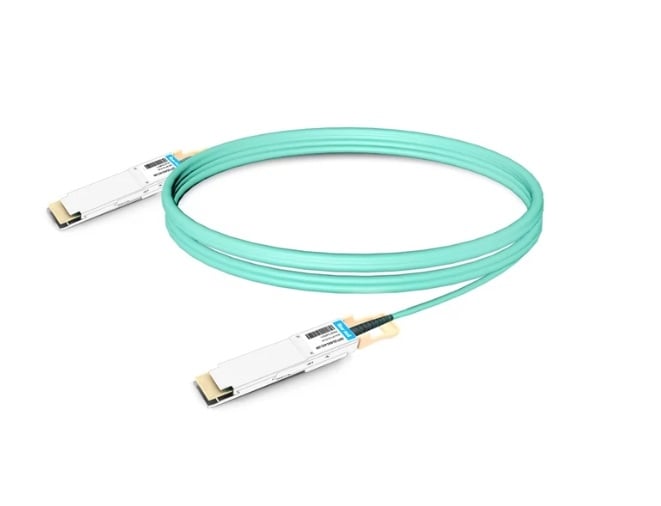
Basics of QSFP-DD transceivers
Compact and high density, the QSFP-DD (Quad Small Form-factor Pluggable Double Density) transceivers are optical modules that can support data rates of 400Gbps. Four independent data lanes are used to achieve this; each one having a capacity of transmitting at 100Gbps. To ensure optimal performance and energy efficiency during fast transfer, QSFP-DD transceivers apply cutting edge electrical as well as optical technologies. They can conveniently integrate into current systems since they work with already existing interfaces such as the QSFP28. This component is designed to be modular, which means it can be swapped without switching off or shutting down other parts of the system, thus making maintenance easier without interfering with network operations too much.
Comparison between QSFP-DD and other modules
In the comparison of QSFP-DD transceivers with other types like QSFP28 and CFP2, several key differences and performance metrics emerge that underpin the advantages of QSFP-DD technology.
Data Rates and Density
- QSFP-DD: A maximum of 400Gbps using four 100Gbps lanes is supported. It also allows for increased port density thus offering more connections in a given rack space.
- QSFP28: It has data rates of 100Gbps through four lanes each running at 25Gbps; although it is still relevant, its overall bandwidth is lower than that of QSFP-DD.
- CFP2: Typically supports data rates as high as 100 Gbps but occupies more physical space thus less dense.
Form Factor and Compatibility
- QSFP-DD: Consequently, it can accept QSFP28 modules into its ports, making them versatile when deployed since there are no separate ports for the two different modules.
- QSFP28: Only compatible with its own interface, which restricts flexibility in mixed environment applications.
- CFP2: The presence of dedicated slots in network switches may be required since it isn’t compatible with any QSFP format.
Power Consumption
- QSFP-DD: In general, these are designed to operate on a lower power envelope per Gbps so as to optimize energy usage for high-performance networks.
- QSFP28: Power consumption per Gbps exceeds that of QSFP-DD, thereby making it less cost-efficient when rolled out on a large-scale basis.
- CFP2: These three had the highest power requirements where their impacts on operational costs over time can be felt differently by most customers among these three modules.
Optical Reach
- QSFP-DD: At approximately up to 10km single mode fiber link distance over which it has reached similar to CFD2 while short distances within Data Center environments are also achievable.
- QSFP28: Shorts distances (up to one kilometer) via multimode fiber, which makes it unsuitable for long-haul applications.
- CFP2: Though energy efficiency and size are sacrificed, these were best suited for long-distance links, surpassing the reach capabilities provided by QSFP28 in most cases.
To sum up, the QSFP-DD transceiver module distinguishes itself with its combination of high data rates, compact form factor, backward compatibility as well as power efficiency. Its superior scalability and flexibility make it a robust solution that meets emerging network needs in an increasingly data-driven world.
Step-by-step guide to using QSFP-DD transceivers
Check Compatibility: Before you deploy QSFP-DD transceivers, it is important to ensure that the QSFP-DD interface is supported by your network switches and equipment. Look at the manufacturer’s specs to confirm compatibility.
Gather Tools: This installation will require a few different tools – anti-static wrist straps, a fiber optic cleaning kit, appropriate cable assemblies among others. Having everything prepared ahead of time helps maintain integrity during the installation process.
Transceiver Installation:
- Carefully remove the QSFP-DD transceiver from its packaging, avoiding the optical connectors or gold contacts.
- Ensure that you align it with its corresponding slot on the switch. The notch on your device should fit perfectly into a tab within this particular section.
- Gently push until secure seating is achieved while hearing a click sound indicating proper locking in place.
Connect Fiber Optic Cables:
- You need single-mode or multimode fibers based on distance and application as appropriate fiber optic cables for your intended connections.
- Make sure they are clean without debris before connecting them firmly to optical ports of quality assurance partners’ fastener touch when they are securely placed.
Power-Up System: Turn on all network equipment so as to detect QSPF-DD transceiver by system check status indicators displaying readiness for operation in devices.
Testing Conducted: After successful installation, diagnostic tests are run to verify if the transceiver works correctly within the network. Use monitoring tools capable of assessing performance metrics like data rates latency etc.
Optimize Performance: Configure any necessary settings inside management system needed improve performance according demands organization’s networks with regard usage of qsfp dd transceivers.
By following these steps, one can be assured of successful deployment qsfp dd, enhancing scalability while maintaining overall betterment.
Understanding AOC: QSFP-DD AOC and 800g
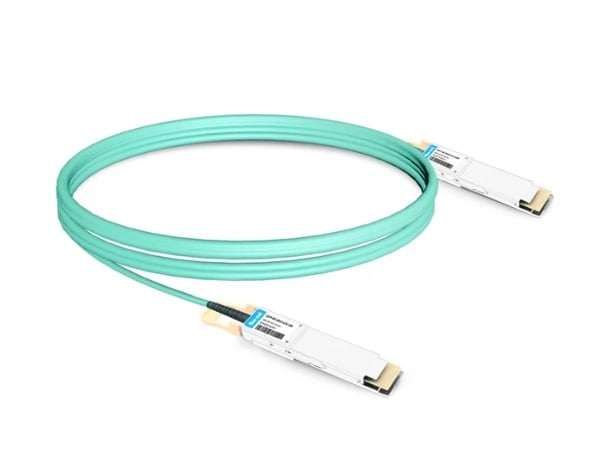
What are active optical cables (AOC)?
Active Optical Cables (AOCs) are high-speed data transmission cables that combine optical fibers with electrical interfaces at both ends. Converting electrical signals to optical signals and vice versa, these cables can send information over longer distances than regular copper wires. They support multiple standards, including Ethernet and InfiniBand, while also being lighter in weight, more flexible for routing through tight spaces, and having less attenuation of the signal, which makes them perfect for use in data centers as well as high-performance computing environments.
Features of 800g QSFP-DD AOC
The 800G QSFP-DD AOC has a variety of important features that make it useful in high-performance environments for transmitting data:
- High Bandwidth: Supporting data rates of up to 800 Gbps, these cables are ideal for bandwidth-heavy applications because they allow large amounts of data to be transferred quickly with low latency.
- Lower Power Consumption: Compared to traditional copper cables, AOCs use less energy which helps reduce costs and improve overall efficiency in data center operations.
- Small Size: This form factor allows for high-density connections and is vital when scaling the infrastructure as it promotes efficient use of space within networking equipment in data centers.
- Longer Reach: Since AOCs can transmit signals over longer distances (more than 100m) without significant degradation, they increase flexibility within networks significantly.
- Better Signal Integrity: The incorporation of optical fibers reduces signal loss while ensuring maximum integrity hence providing quality connection between devices located far apart from each other under stressful conditions.
These characteristics make the next generation 800G QSFP-DD AOC suitable for use in computing networks that require speed, efficiency and reliability.
Benefits of using QSFP-DD active optical cables
Data transmission and networking performance can be significantly improved by using QSFP-DD Active Optical Cables (AOCs).
- Cost-effectiveness: Although the initial cost of AOCs may exceed that of conventional copper cables, long-term advantages such as decreased power consumption and lower maintenance needs make up for this expense, leading to overall savings for data center operators.
- Better Performance: The introduction of AOCs has improved data transmission performance through reduced latency and increased bandwidth which enable the smooth running of cloud computing applications with high demand in real time processing.
- Weight & Flexibility: In comparison to other types of cables, AOCs are lighter in weight thus making it easy to install them especially within densely populated data centers. Easier routing due to installation flexibility created by AOC’s lightness improves cable management while enhancing cooling efficiency through better airflow.
- Environmentally Sustainable: These devices promote sustainable practices in data centers by reducing energy usage and maximizing performance; hence they align with green technologies that have been adopted widely across various industries.
- Future-Proofing: Organizations adopting 800G AOCs will easily scale their infrastructure as networking demands change thereby positioning themselves ahead of competitors who may not meet future bandwidth requirements in a rapidly evolving technological landscape.
For organizations seeking enhanced network capabilities coupled with efficient reliability, these reasons strongly advocate for QSFP-DD Active Optical Cables utilization.
How to Install QSFP-DD Active Optical Cable?
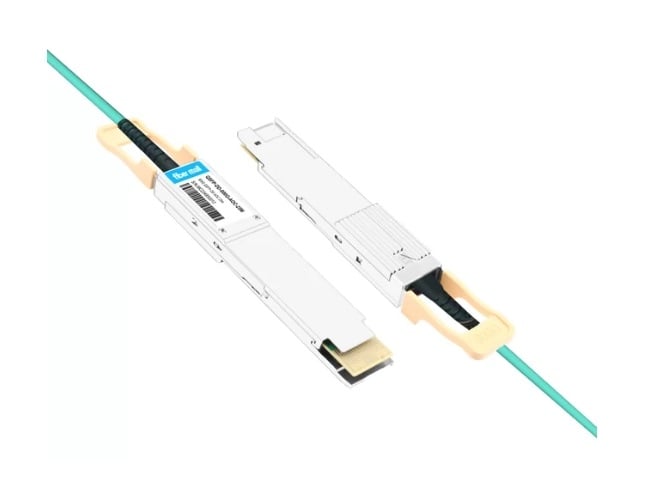
Installation steps for QSFP-DD AOC
- Preparations: Clear the installation zone of impurities and barriers. Before you plug in any cables, ascertain that the equipment has been switched off.
- Identify Ports: Find the QSFP-DD ports on appropriate gadgets (switches, servers) to which AOC will be attached.
- Cable Inspection: Prior to installation, check for any physical damage or defects on Active Optical Cable.
- Connect AOC: Match up the QSFP-DD connectors with these ports and gently push them into their respective sockets until they audibly click in place securely.
- Power On Devices: Ensure proper functioning by powering on all devices after making all connections.
- Test Connection: Employ diagnostic apps or network management software to check for correct functionality of this AOC as well as data transmission as per expectation.
Common issues and troubleshooting QSFP-DD active optical cables
- No Connectivity: If there’s no connection with the QSFP-DD AOC, check that the connectors are seated properly in their ports at first. Also, confirm if the devices used are powered on and working well.
- Signal Loss Or Degradation: Too many bends or kinks in a cable can cause this problem. Ensure it is routed correctly without sharp turns and adheres to its maximum recommended bend radius by the manufacturer.
- Intermittent Connection: Electromagnetic interference or bad connectors could be responsible for such problems. Look out for any signs of wear on cables as they should be kept away from other high voltage equipment. If issues still exist, then replacing them with new ones might help.
- Incompatible Equipment: Connected devices may not support QSFP – DD AOC, thereby causing compatibility problems. Review device specifications to ascertain whether active optical cables being used are supported.
- Overheating : Performance can also be affected because of too much heat . Make sure installation environment has good ventilation ,and do not bundle tightly so that cables can dissipate sufficient amount of heat .
Addressing these common issues and using systematic troubleshooting approaches will enable organizations to ensure optimal performance and reliability within their networking infrastructure which makes use of QSFDD – AOCS .
Maintenance tips for QSFP-DD AOC
- General Inspection: Check the QSFP-DD AOC for damages, connector dirtiness and wear over time. Signal degradation can be averted by cleaning the connectors with applicable cleaning kits.
- Suitable Storage: Store active optical cables with minimum strain. Avoid tight curls and keep them in dry environments to prevent any internal harm caused by dust.
- Temperature Control: Monitor temperature as well as humidity in the installation premises. Perfect conditions usually fall between 0°C through 70°C for its operation stage ensuring long life span of these cables providing best performance levels.
- Avoid Ports Overload: Make sure that there are no many cords on devices’ ends connected together. As it may interfere with the signals leading risking damage to those AOCs.
- Regular Testing: Employ routine examinations using testing equipment that is compatible to check how well a cable performs. This will enable you detect probable causes of performance breakdown before they happen.
These maintenance hints make it possible for organizations to increase the operational efficiency and lifespan of their QSFP-DD Active Optical Cables greatly.
Comparing 800g QSFP-DD AOC to Other Transceiver Modules
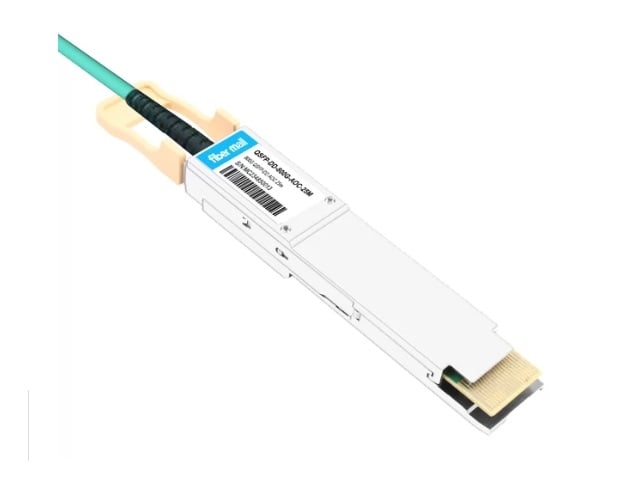
Advantages of 800g QSFP-DD over 400g
- Increased Bandwidth: The 800g QSFP-DD has twice as much data transmission capacity as 400g, thus increasing throughput for high-demand applications.
- Better power efficiency: The new design of 800g modules usually provides more energy efficient features which enable them to consume less power per gigabit compared to previous models.
- Better scalability: Organization can future-proof their networks due to the presence of higher speed support in the 800G QSFP-DD as data demands continue growing.
- Reduced Latency: Advanced technology used in these modules minimizes latency, hence faster data transmission and improved performance for critical applications.
- Higher port density: More ports can be installed within the same rack space thereby maximizing data center efficiency since it is compact.
Performance comparison: QSFP-DD vs OSFP
There are a number of important performance indicators to consider when comparing QSFP-DD and OSFP transceiver modules. First, both modules support high data rates but use different methods to do so: QSFP-DD can reach up to 800 Gb/s by using four lanes of 200 Gb/s each, while OSFP uses a larger form factor for similar speeds. Generally speaking, OSFP has higher power consumption than QSFP-DD because of its design. This makes it less suitable for power-constrained environments where efficiency is critical. The compact size also gives the advantage of greater port density in data center configurations—this feature is especially valuable for companies that want to maximize hardware capabilities within tight spaces. In conclusion, though both types work well in high-speed applications, they have different strengths; thus QSFP DD may be more efficient and dense overall compared with others like it.
Use cases for QSFP-DD AOC and other modules
The QSFP-DD Active Optical Cable (AOC) and its affiliated modules are being utilized more and more in different fields because of their high efficiency, performance, and flexibility. To begin with, intra-rack and inter-rack connectivity is achieved by data centers using the QSFP-DD AOC which reduces power consumption significantly while still maintaining very fast data throughput rates. This particular application is very important in places where space as well as energy efficiency are key.
Next HPC (high performance computing) facilities utilize this type of equipment to connect supercomputers together allowing for quick transfer between nodes thus improving overall computational speeds. These systems must be able to handle large datasets efficiently at a rate of up to 800 Gb/s.
Last but not least telecom providers use these modules for network backbone infrastructure which provides higher bandwidths with low latencies essential for modern communication services. Therefore it can be seen that QSFp-DD is a crucial part of the ever changing 5G network environment since rapid transmission over scalable networks are necessary here too.
Future of 800g: Trends and Predictions
Upcoming advancements in 800g technology
There are various innovations that will most probably take place in the future of 800G technology with the aim of improving efficiency and performance. The first step towards this is optical connectivity through modulation formats such as PAM4 (Pulse Amplitude Modulation), enabling higher data rates to be achieved over current fiber infrastructure. Machine learning application is another area where efficiencies can be realized by optimizing network operations, predicting failures before they occur and managing traffic more effectively. Furthermore, coherent optical technologies like advanced digital signal processing (DSP) will lead to better transmission distances and higher reliability levels than ever before. Finally, thermal management solutions should also be worked on so as to make 800G modules consume less energy due to increasing concerns about power usage in high-density settings.
Market trends driving 800g adoption
The main force behind the adoption of 800G technology is the growing need for greater bandwidth to accommodate data-heavy applications like cloud computing, artificial intelligence, and video streaming. As global data traffic grows at an unprecedented rate, telecom companies and data centers are on the lookout for solutions that provide increased capacity and reduced latency. Also, with 5G infrastructure being rolled out globally, there is a requirement for strong backhaul capacities which can be provided by 800G as it allows seamless connectivity among many devices. Moreover, scalable network solutions that can support future technological developments along with energy-efficient systems are other important factors attracting more firms towards adopting this new standard in their operations.
Impact of 800g on data centers and network infrastructure
The introduction of 800G technology greatly improves the effectiveness and efficiency of data centers and network infrastructures. Firstly, it allows for significant increases in bandwidth, which enables data centers to manage massive amounts of data traffic coming from cloud services, streaming, and enterprise applications more easily. As a result, this decreases latency, which is crucial for real-time applications like AI and machine learning. Secondly, because 800G solutions are smaller in size, they can create higher-density designs that use less energy while also reducing the physical space needed within the data center, thus cutting operational costs as well as improving thermal management. Furthermore, 800G’s scalability supports fast-growing network capacity, allowing organizations to effortlessly accommodate future requirements without costly revamps involving large-scale physical changes being necessary. To put it differently, switching over to 800 G technology not only readies up data centers against present-day challenges but also suits them with sustainable high-performance networks demanded by the industry at large.
Reference Sources
Frequently Asked Questions (FAQs)
Q: What is 800g AOC technology?
A: A high-speed connectivity solution for data centers and high-performance computing environments, the 800g AOC (Active Optical Cable) uses optical fiber to send data at 800 gigabits per second with low latency and high bandwidth.
Q: What sets QSFP-DD apart from other transceiver modules?
A: The QSFP-DD (Quad Small Form Factor Pluggable Double Density) technology offers twice as much density as the standard QSFP module, supporting up to 400G and 800G bandwidths. These next-gen compatible transceivers enable fast data transmission in next-gen data centers.
Q: What are DAC breakout cables good for?
A: By allowing a single high-speed port to connect multiple lower-speed connections, DAC breakout cables offer enhanced flexibility while lowering costs. They are also ideal for connecting between high speed switches and many servers or storage devices.
Q: When do you need to use a fiber media converter?
A: Fiber media converters convert electrical signals into light signals so that different types of network media can communicate with each other (for instance copper and fiber). This improves the quality of data transfer over longer distances by extending network reachability where otherwise it wouldn’t be possible.
Q: What are some benefits associated with using 800g QSFP-DD Active Optical Cables?
A: With low energy consumption over long distances, minimal signal loss makes them suitable for HPCs as well as large-scale DCs demanding maximum performance capabilities; these cables boast ultra-high bandwidth coupled together efficient power usage within one compact package!
Q: Why is breakout important in 800g AOC and QSFP-DD technologies?
A: Breakout features in 800G AOC, and QSFP-DD technologies allow for the division of high-speed connections into multiple lower-speed links, which helps to optimize bandwidth usage and provide flexibility for network design and upgrades.
Q: Can 800g OSFP AOC be used interchangeably with other transceivers?
A: OSFP AOCs are designed for use with specific networks and cannot typically be swapped out for different types or speeds of transmitters. They must conform to the appropriate ports and standards within a given system.
Q: What are the applications of 800g DAC AOC?
A: DAC (Direct Attach Copper) active optical cables can be found in data centers—high-performance computing environments where they serve as cost-effective solutions for short-range, high-capacity intra- or inter-rack connections.
Q: How does 400g QSFP112 AOC differ from 400g OSFP technologies?
A: Operating at similar speeds but differing in form factors—specifically power usage requirements—the two may service different infrastructure needs while both being applicable in high-bandwidth settings. The former utilizes a low-latency transfer protocol exclusive to its connector type, whereas the latter offers standard capabilities across various connectors.
Q: What role does the MSA play in QSFP-DD and AOC technologies?
A: Multi-Source Agreement (MSA) specifications help ensure that products developed by different manufacturers will work together seamlessly when integrated into existing systems using either type of technology.
Related Products:
-
 QSFP-DD-800G-AOC-20M 20m (66ft) 800G QSFP-DD to QSFP-DD Active Optical Cable
$2790.00
QSFP-DD-800G-AOC-20M 20m (66ft) 800G QSFP-DD to QSFP-DD Active Optical Cable
$2790.00
-
 QSFP-DD-800G-AOC-7M 7m (23ft) 800G QSFP-DD to QSFP-DD Active Optical Cable
$2740.00
QSFP-DD-800G-AOC-7M 7m (23ft) 800G QSFP-DD to QSFP-DD Active Optical Cable
$2740.00
-
 QSFP-DD-800G-AOC-5M 5m (16ft) 800G QSFP-DD to QSFP-DD Active Optical Cable
$2730.00
QSFP-DD-800G-AOC-5M 5m (16ft) 800G QSFP-DD to QSFP-DD Active Optical Cable
$2730.00
-
 QSFP-DD-800G-AOC-30M 30m (98ft) 800G QSFP-DD to QSFP-DD Active Optical Cable
$2820.00
QSFP-DD-800G-AOC-30M 30m (98ft) 800G QSFP-DD to QSFP-DD Active Optical Cable
$2820.00
-
 QSFP-DD-800G-AOC-15M 15m (49ft) 800G QSFP-DD to QSFP-DD Active Optical Cable
$2775.00
QSFP-DD-800G-AOC-15M 15m (49ft) 800G QSFP-DD to QSFP-DD Active Optical Cable
$2775.00
-
 QSFP-DD-800G-AOC-10M 10m (33ft) 800G QSFP-DD to QSFP-DD Active Optical Cable
$2750.00
QSFP-DD-800G-AOC-10M 10m (33ft) 800G QSFP-DD to QSFP-DD Active Optical Cable
$2750.00
-
 QSFP-DD-800G-AOC-3M 3m (10ft) 800G QSFP-DD to QSFP-DD Active Optical Cable
$2710.00
QSFP-DD-800G-AOC-3M 3m (10ft) 800G QSFP-DD to QSFP-DD Active Optical Cable
$2710.00
-
 QSFP-DD-800G-AOC-25M 25m (82ft) 800G QSFP-DD to QSFP-DD Active Optical Cable
$2805.00
QSFP-DD-800G-AOC-25M 25m (82ft) 800G QSFP-DD to QSFP-DD Active Optical Cable
$2805.00
Related posts:
- 10 Types of 100G QSFP28 Single Lambda Modules – Features and Advantages
- High-Speed Interconnect Technology: SFP28/SFP56/QSFP28/QSFP56/QSFP-DD/OSFP/DAC/ACC/AEC
- Everything You Need to Know About CWDM Transceivers: From SFP Modules to 80km Optical Fiber Connectivity
- The Ultimate Guide to SGMII SFP Transceivers: Everything You Need to Know About Optical Transceivers and Ethernet Ports

